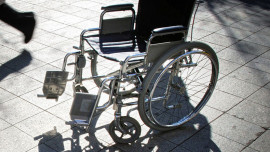
Over the last decade, countries across the globe have decided to actively pursue the provision of rights to differently-abled children as the main agenda in all developmental plans. This is also manifested in the United Nations’ Sustainable Development Goals and the declaration of Global Disability Summit 2018. Amongst these rights, the main focus has been placed on the provision of quality education to children with disabilities, to promote inclusion and to undertake evidence-based policymaking with respect to children with disabilities.
Pakistan is also a staunch supporter of SDGs and has also committed to making these goals the main focus of all federal and provincial laws, policies, strategies, sector plans and frameworks. Time and again, federal and provincial governments have highlighted their allegiance to Article 25-A of the Constitution and SDG4 to ensure that ALL children are educated. While it is heartening to see such a response from all relevant stakeholders, the right to education of differently-abled children has mostly been sidelined and has only been restricted to the discussions pertaining to ‘special’ education. By and large, the reason for doing so is the absence of a standardised classification criterion for disabilities and the lack of credible data sources at governmental level which can be relied upon to inform the policymaking process pertaining to the education of children with disabilities. In this regard, several civil society, non-governmental and private organisations, mainly with support from UK Aid-DFID, have taken the lead to import, tailor and adapt the best practices from all over the world in order to calculate the disability incidence and learning outcomes of children with disabilities.
For this purpose, ASER Pakistan — a citizen-led initiative — has included UN Washington Group on Disability Statistics’ Short Set of Questions in its yearly household level survey since 2014. This year, it has collected information on the disability status of over 119,000 children (3-16 years) from Punjab, K-P, FATA and Islamabad. According to ASER 2018, 3.56% of the children have at least one functional disability. Strong regional differences are also evident since in Islamabad a higher proportion of children were reported to have difficulties (8.1%), while the lowest proportion was in Punjab (2.72%). Other surveys, using different questionnaires and methodologies, have found the prevalence rate of disability in children from different areas of Pakistan to be ranging from 10% to 15%. This evidence is contradictory to the results of National Population Census 2017, which estimates the disability prevalence in the country to be a meagre 0.48% of total population, and is enough to raise a few (if not all) eyebrows and to question the validity of the census results regarding children with disabilities. Therefore, it is imperative to take these differentials into account and to use the evidence put forward by the non-public sources while drafting the education sector plans instead of shunning these sources away.
Despite of these issues, it is encouraging to see that 74.66% of different-abled children are enrolled in schools, as reported by ASER 2018. However, most of these children have been enrolled in the mainstream schools which necessitates that inclusive education is implemented through proper teacher trainings, environmental adaptations, curriculum adjustments and behavioural changes, among others. Only then can we truly aim for the achievement of Article 25-A and SDG4. In addition to this, there is also a need for the development of standardised assessment tools which can then be used to assess the learning outcomes of children with disabilities. The citizen-led initiative has done so and has adopted its tools into Pakistan Sign Language and Braille with support from Deaf Reach and Sightsavers. The government can take up this initiative even further and adopt the available tools for all types of disabilities or at the very least use the adopted tools to measure the learning outcomes of all such children.
With so many initiatives taking place, the time is about right for the government to modify its approach and to collaborate with the private sector in order to learn from what has worked and not to reinvent the wheel all over again.
Published in The Express Tribune, February 28th, 2019.
Like Opinion & Editorial on Facebook, follow @ETOpEd on Twitter to receive all updates on all our daily pieces.





















































COMMENTS
Comments are moderated and generally will be posted if they are on-topic and not abusive.
For more information, please see our Comments FAQ